|
The Marble City of Split |
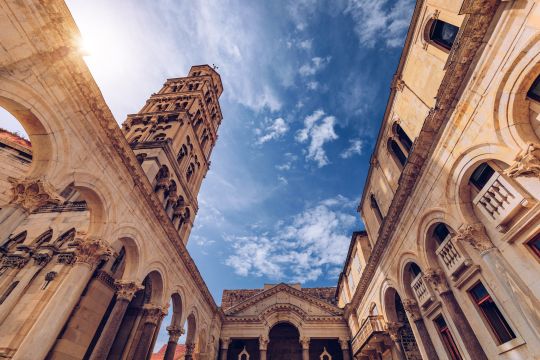 It is not always common knowledge that the narrow streets of Split's Old Town are actually hallways in Emperor Diocletian's Palace. Many restaurants and shops occupy the former palace rooms, the underground shopping center selling souvenirs used to store drinking water and wine in terracota amphoras. In addition, numerous museums, the National Theater, and old churches and other archeological sites in the Split region make it an important cultural attraction.
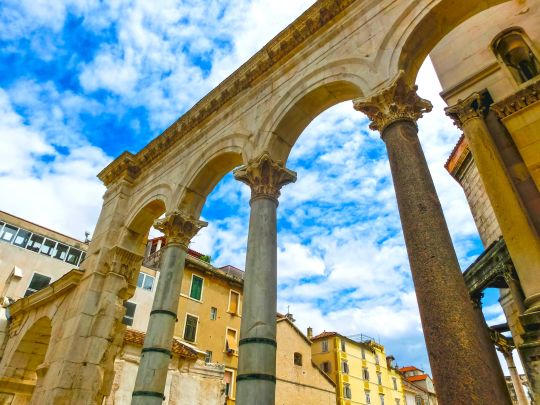 At the end of the fourth century, the Roman Emperor Gaius Valerius Aurelius Diocletianus, who called himself son of Jupiter, built his lavish summer palace in the bay of Aspalathos, the land of his birth. When he retired in year 305, he moved here to spend the rest of his life in the mild climate of the Dalmatian Coast. The transformation of the palace into the town began in the 7th century, when the inhabitants of nearby Salona took refuge here during the invasion of the Avars and Slavs. The early medieval town grew under the rule of Croatian kings until, at the beginning of the 15th century, the medieval commune was replaced by Venetian administration, then Napoleon's French military rule, then Austro- Hungarian Empire, before it became a part of Yugoslavia, and only recently the country of Croatia. 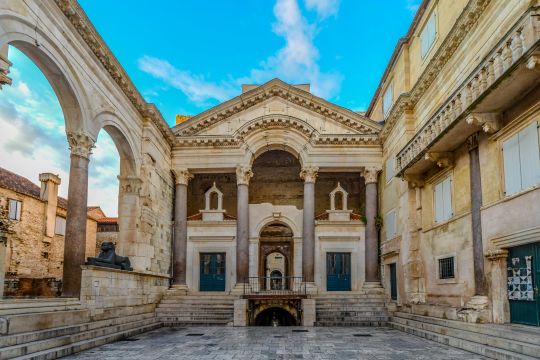 Today the palace is the heart of the city of Split. The importance of Diocletian's Palace transcends local significance because of its level of preservation and the buildings of succeeding historical periods, stretching from Roman times onwards, which form the very tissue of old Split. The Palace is one of the most famous and integral architectural and cultural constructions on the Adriatic coast and earned a spot on the UNESCO World Heritage list. Even the remains of the old Roman aqueduct still line the road from Split to the Jadro river. |
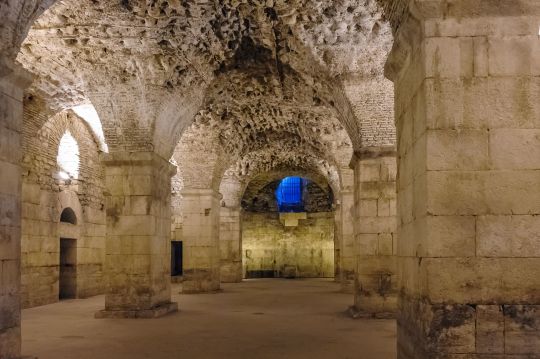 The ground plan of the palace is an irregular rectangle with towers projecting from the severe western, northern, and eastern facades. Each facade has a monumental gate that leads to an enclosed courtyard. While the southern facade almost matches, the elaborate architectural composition of the arcaded gallery on the upper floor marks Diocletian's own sea entrance. The southern facade rose from the sea itself, allowing Diocletian to sail directly into his palace. It combines qualities of a luxurious villa with those of a military camp. The Palace was built of high quality white local limestone from quarries on the island of Brac, tuffa from the nearby river beds, and brick from Salonitan workshops. Some materials for decoration were imported: Egyptian granite columns and sphinxes, fine marble for revetments, and some capitals from Proconnesos. 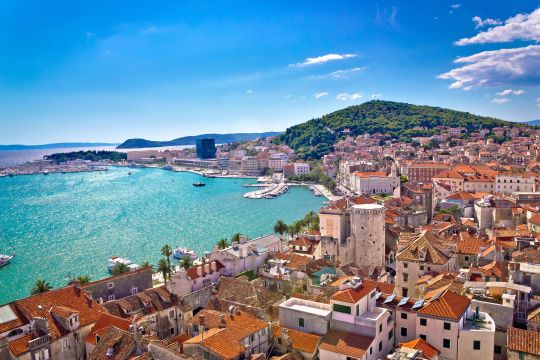 In modern times, the city of Split is the economic and administrative center of Middle Dalmatia, and a home to about 200,000 people. It is the main base for exploration of the Middle Dalmatian Coast and the islands of the beautiful Croatian Adriatic. Split is a city that lives at a slow pace. The feeling that persists is one of an everlasting vacation. The atmospheric squares, restaurants and cafes, the fashionable Riva sea-front promenade, and the refreshing breeze of Mistral wind in summer make it a perfect spot to gather your thoughts, consider the long history of the city and recharge before setting out to explore another lavender-covered island, another blue lagoon, or before hiking among the emerald green waterfalls of Plitvice National Park. 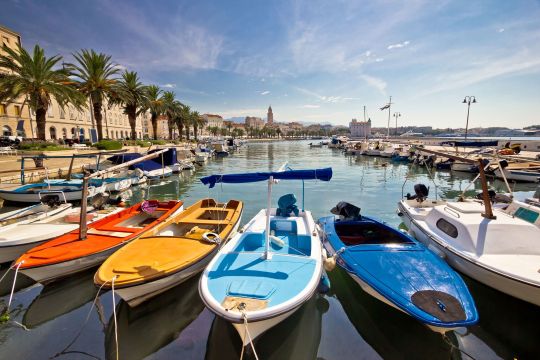 Split is a busy port, with an international airport and regular ferry services to the nearby islands, the north and south Adriatic, Italy and Greece. The merchant and passenger ships of the Split shipyards may be encountered in almost all the seas of the world. The fertile fields around Split represent a good base for agriculture, while cultural monuments, superb landscapes and unparalleled seascapes make it a tourist's wonderland. Split is also a university seat and host to numerous scientific institutions. |





